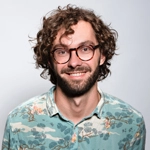Addressing the Physician Shortage: Innovations from Ochsner Health and Xavier University
The American Medical Association (AMA) Update serves as a vital platform for discussing pressing healthcare issues that impact physicians, residents, medical students, and patients alike. Among the myriad topics covered, the ongoing physician shortage stands out as a significant concern, particularly in underserved areas. In a recent episode, Todd Unger, AMA’s Chief Experience Officer, engaged in a compelling conversation with Dr. Leonardo Seoane, the founding dean of the Xavier Ochsner College of Medicine and executive vice president at Ochsner Health. Their discussion highlighted innovative strategies to tackle this critical issue.
The Physician Shortage: A Growing Concern
The Association of American Medical Colleges (AAMC) has projected a shortage of up to 86,000 physicians by 2036, a statistic that underscores the urgency of addressing this crisis. However, the impact of this shortage is not uniform across the United States. Regions like the Gulf South, where Ochsner Health operates, face particularly acute challenges. Dr. Seoane noted that areas such as Louisiana and Mississippi are expected to experience some of the worst shortages, especially in primary care and psychiatry.
This shortage not only affects patient access to care but also increases competition for available positions, leading to longer wait times for patients and difficulties in recruiting qualified physicians. The need for innovative solutions has never been more pressing.
Innovative Solutions: The Ochsner Physician Scholars Program
In response to the physician shortage, Ochsner Health launched the Physician Scholars Program in 2021, aimed at alleviating financial barriers for medical students. This initiative partners with two medical schools—LSU Health Sciences in Shreveport and the University of Queensland—to provide tuition reimbursement for students who commit to practicing in primary care or psychiatry within the Ochsner Health System.
Dr. Seoane shared success stories from the program, including the recent hiring of Dr. Mary Curet, who completed her family medicine residency and is now serving in a rural community in southwest Louisiana. The program currently has eight students enrolled, and its success demonstrates the potential for financial incentives to attract physicians to underserved areas.
The Launch of Xavier Ochsner College of Medicine
Perhaps the most exciting development in addressing the physician shortage is the establishment of the Xavier Ochsner College of Medicine. This new medical school, a partnership between Xavier University—one of the premier Historically Black Colleges and Universities (HBCUs)—and Ochsner Health, aims to increase the number of U.S. medical graduates and enhance diversity in the medical workforce.
Dr. Seoane emphasized the importance of this initiative, noting that while African Americans make up approximately 14% of the U.S. population, they represent only 5.7% of physicians. Similarly, Hispanics constitute 19% of the population but only 6.9% of physicians. By creating a medical school dedicated to training more Black and Brown physicians, the partnership aims to address these disparities and create a more representative healthcare workforce.
A Transformational Project for the Community
The Xavier Ochsner College of Medicine will be located in downtown New Orleans, adjacent to the iconic Superdome. This strategic location not only enhances the visibility of the program but also positions it to serve the diverse population of the Gulf Coast region. Dr. Seoane described the project as "transformational," not just for the institutions involved but for the broader community and the nation as a whole.
By fostering a diverse pipeline of future physicians, the college aims to improve healthcare access and outcomes for historically marginalized communities. This initiative reflects a growing recognition of the need for diversity in medicine, which is essential for addressing health disparities and ensuring culturally competent care.
Looking Ahead: A Model for Other Institutions
Dr. Seoane expressed hope that the collaborative model established between Xavier University and Ochsner Health could serve as an example for other health systems and universities across the country. By forming partnerships that leverage local resources and address community needs, other institutions can also contribute to solving the physician workforce crisis.
As the AMA continues to advocate for solutions to the physician shortage, initiatives like the Physician Scholars Program and the Xavier Ochsner College of Medicine represent promising steps forward. By reducing financial barriers and increasing diversity in medical education, these programs aim to create a more equitable healthcare system for all.
Conclusion
The AMA Update provides a crucial forum for discussing the challenges and innovations in healthcare today. The conversation between Todd Unger and Dr. Leonardo Seoane highlights the urgent need to address the physician shortage through creative solutions and partnerships. As the healthcare landscape continues to evolve, initiatives that prioritize accessibility, diversity, and community engagement will be essential in shaping the future of medicine.
For those interested in staying informed about these important topics, subscribing to the AMA Update ensures access to expert opinions and insights on the most pressing healthcare issues affecting physicians, residents, medical students, and patients.


